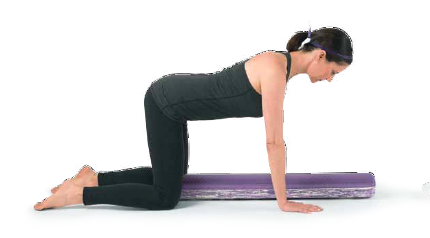We've recently expanded our family by adopting a beautiful kitten, JiJi. Watching JiJi brings us such pleasure, especially when she's in the midst of play. She moves with such grace and ease. It's fascinating to watch how she prepares her posture to get ready to spring into action. Most of us have done a cat exercise in Physical Therapy, Yoga, Pilates or a fitness class. We are looking for ways to align with this cat-like motion. Mary Bowen, distinguished Pilates Elder says, "Everything is right about it (the cat). It's strong when it needs to be. It's loose. It rests when it needs to. And, it's always sort of semi-aware, too, without having to jump in..."
“Everything is right about it (the cat). It’s strong when it needs to be. It’s loose. It rests when it needs to. And, it’s always sort of semi-aware, too, without having to jump in...” Mary Bowen, Master Pilates Elder”
Like Joseph Pilates, Dr. Feldenkrais was fascinated with studying primal movements from babies, to animals, to athletes. The Feldenkrais Method® is a way of developing awareness to our whole body to discover our hidden areas which complete our cortical maps. Think of this as updating your body's navigating software. A mastery that requires your muscle of attention. "We're interested in where the quality is optimal, not where the quality diminishes." Mark Reese, Ph.D, Feldenkrais Master Trainer
“We’re interested in where the quality is optimal, not where the quality diminishes.”
Mark Reese, Ph.D, Feldenkrais® Master Trainer”
The following recording is a movement lesson inspired by the Feldenkrais Method and excerpted from The Smartroller Guide to Optimal Movement. Since Feldenkrais lessons are for learning, they work best when you follow some easy guidelines: (if new to Feldenkrais, go here)
- Move slowly and edit the size of your movements to allow for tension-free movement
- Notice your breath to see if you are doing the lesson with ease-the quality of your breath will tell you
- Take rests and avoid pain to maximize results to help make long term improvements
- Delay stretching if you can-when you stretch, you often clamp down on the spine by pushing into the tissues you already notice. By editing your movement you can shift to a more even distribution to elongate the spine
- Use the imagery suggested, i.e. like editing the movements in the shape of sleepy cat eyes
- Have a beginner's mind by attending to the novelty of the subtle movements
In order to improve your body's movement sense, you need to turn down the visual sense. Browse the picture gallery below to get some sense of the directions before you proceed so you won't need to look at them during the lesson. Please follow the directions as only suggestions. You will have your own handwriting, your own pace and comfort. Let curiosity be your guide.
When you are ready, find a quiet place on the floor, grab your mat, Smartroller®, and a rolled up towel to attend to yourself for the next 15 minutes. See if you are more feline with your movements once you are done.
“...the best most fluid cat/cow I’ve ever felt afterwards! I have never used a roller prone like that. It was so soothing and calming for my nervous system. TRINA ALTMAN, PMA®-CPT, E-RYT 500”
REFERENCES:
Altman, Trina: http://trinaaltman.com/
Bowen, Mary- interview: http://www.pilateslessons.org/pilates-elder.html
Reese, Mark 1994 Feldenkrais Training LA: http://www.cdbaby.com/cd/markreese
Todd, Mabel: Ideokinesis-http://www.ideokinesis.com/pioneers/todd/todd.htm





